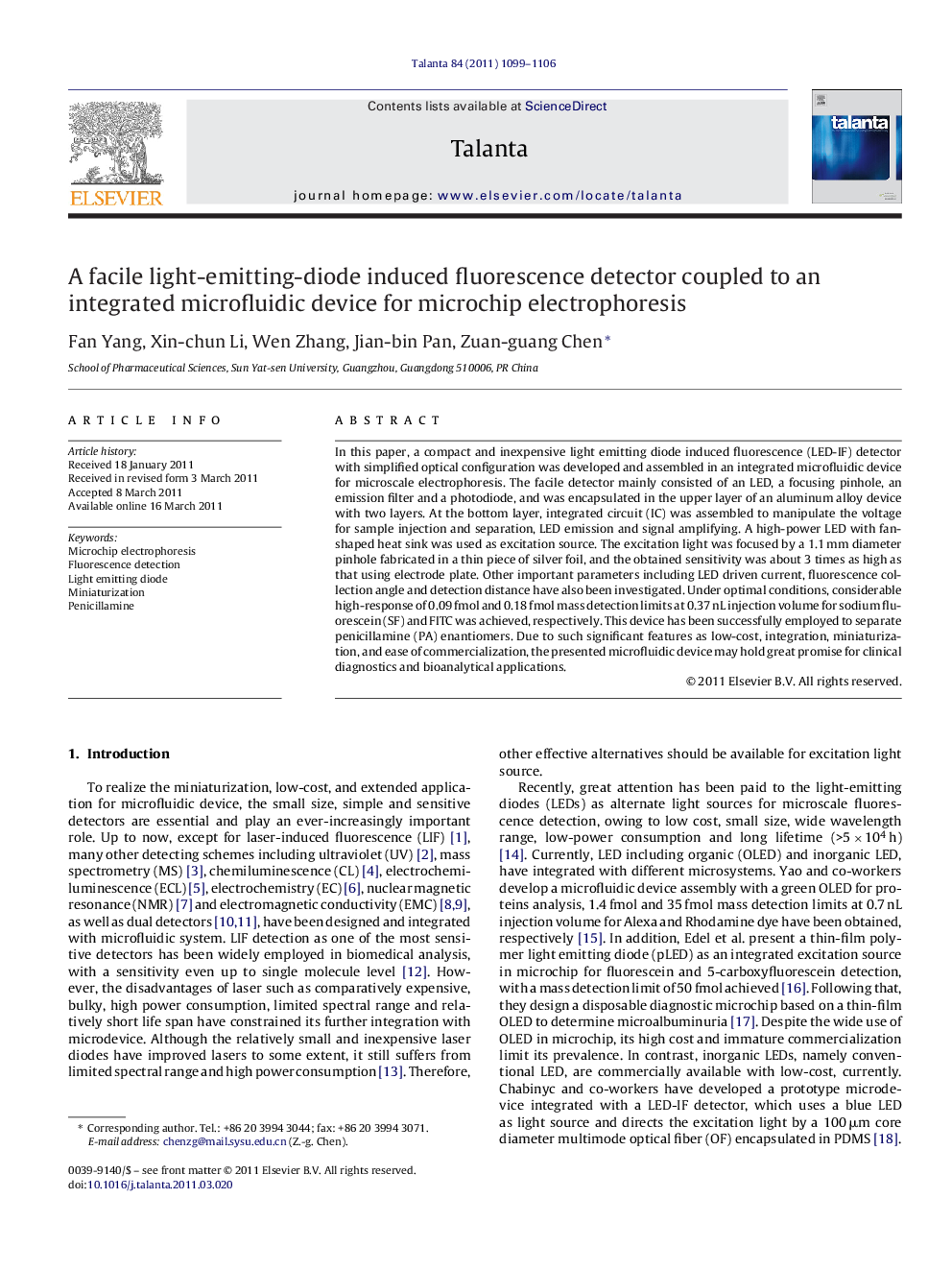| Article ID | Journal | Published Year | Pages | File Type |
|---|---|---|---|---|
| 10560017 | Talanta | 2011 | 8 Pages |
Abstract
In this paper, a compact and inexpensive light emitting diode induced fluorescence (LED-IF) detector with simplified optical configuration was developed and assembled in an integrated microfluidic device for microscale electrophoresis. The facile detector mainly consisted of an LED, a focusing pinhole, an emission filter and a photodiode, and was encapsulated in the upper layer of an aluminum alloy device with two layers. At the bottom layer, integrated circuit (IC) was assembled to manipulate the voltage for sample injection and separation, LED emission and signal amplifying. A high-power LED with fan-shaped heat sink was used as excitation source. The excitation light was focused by a 1.1Â mm diameter pinhole fabricated in a thin piece of silver foil, and the obtained sensitivity was about 3 times as high as that using electrode plate. Other important parameters including LED driven current, fluorescence collection angle and detection distance have also been investigated. Under optimal conditions, considerable high-response of 0.09Â fmol and 0.18Â fmol mass detection limits at 0.37Â nL injection volume for sodium fluorescein (SF) and FITC was achieved, respectively. This device has been successfully employed to separate penicillamine (PA) enantiomers. Due to such significant features as low-cost, integration, miniaturization, and ease of commercialization, the presented microfluidic device may hold great promise for clinical diagnostics and bioanalytical applications.
Keywords
Related Topics
Physical Sciences and Engineering
Chemistry
Analytical Chemistry
Authors
Fan Yang, Xin-chun Li, Wen Zhang, Jian-bin Pan, Zuan-guang Chen,
